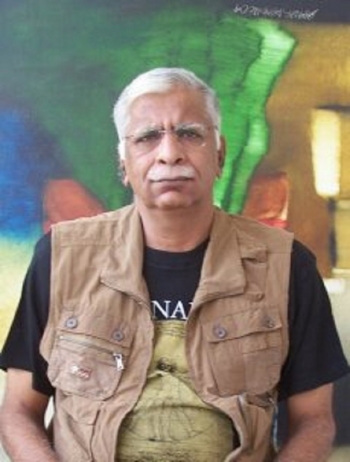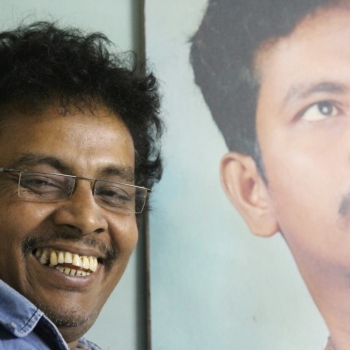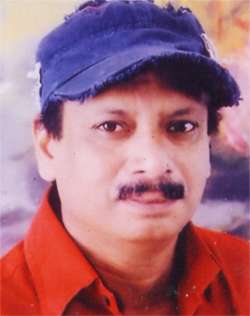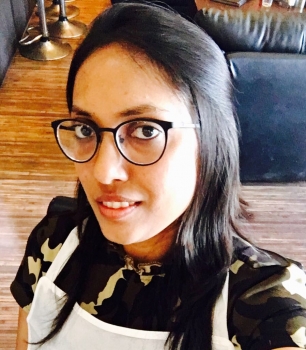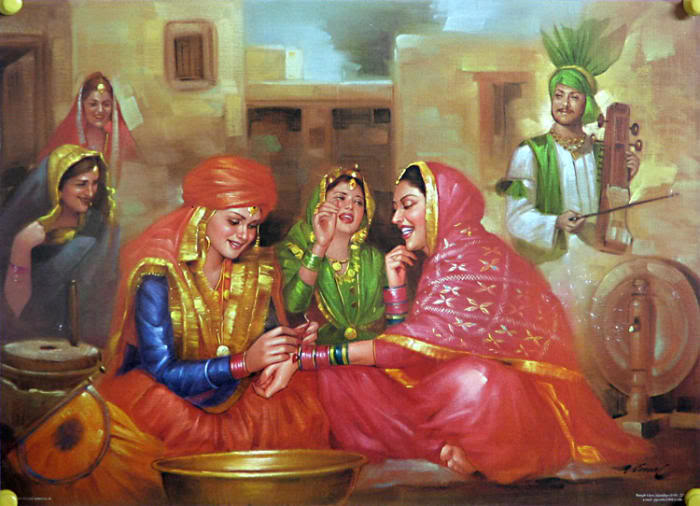
“Art should be something that liberates your soul.”
Keith Haring
“Whatever comes has to go” is the ultimate philosophy of life. Doesn’t matter what you are, where you live, how much you earn, in the end, nothing can stop you from the sour reality we call as death.
But, there are a few things that live even after the people who created or invented them are gone. Such is the glamour and influential power of art.
Art travels through time and is able to evolve through centuries of restructuring that is done by varied cultures and races. Many countries across the world hold a rich history of art, but there is something unique about the essence of Indian paintings.
Also Read: How do Paintings of Deities Affect the Culture of India?
India, a true land of diversity, a nation with several ethnicities and numerous Gods, has an affluent heritage of art for thousands of years. Art in India doesn’t start with the Industrial Revolution or the modern art movement.
Before even European or American people thought of picking up a brush, India held a massive collection of artworks that were representing the exclusive culture of this great nation. What I meant to say is that other nation’s art history is great and nothing less in artistry, but it was Indians who first engraved the idea spiking in their mind to be visible through colours and patterns.
In India, you can find cave paintings, stone sculptures, metal casting, religious manuscripts, Mughal paintings, and modern artworks.
Out of these, few forms such as stone sculptures are believed to be dated between 5000 – 1500 BC. That’s almost 7000 years back. This is what I am saying. Indian paintings and artworks are special because they are the ones that survived the long human race and came out victorious.
Also Read: How to Buy an Affordable Art?
The best part is, unlike so many art forms, Indian paintings and their forms are still preserved to glorify the heritage.
Indian art history can be categorized into separate time epochs:
-
Ancient era
-
Islamic Ascendency
-
Colonial-era
-
Post-independence era
Let’s first take a quick tour of the historical Indian art:
The History
As per the historical evidence, the history of India goes back to 75000 years ago. Indus valley civilisation flourished in India around 50000 BCE to 1300 BCE.
Archaeologists, in recent years, have found some exceptionally crafted stone sculptures in the lost city of Indus valley civilisation. These miniature sculptures were carved using metal, stone, and terracotta.
Soon, with the dawn of new religion such as Buddhism and Jainism, art in India saw several beautifully carved out depictions on the cave walls, stupas, and the doorways.
Also Read: The Legacy of Indian Art Forms
Then during the reign of the Sungas (200-75 BCE), the magnificent stupas (made from stone) of Barhut and Sanchi were created signifying the status of artistry in that era. A distinctive school of sculpture bloomed in Gandhara, situated in Kabul Valley (present-day Afghanistan) along with one in Mathura.
During the Gupta rule (300-600 AD), Indian art was at its peak and the epoch is still recognised as the golden era of art here.
Art in India also witnessed the contemporary modification done by Chalukya and Rashtrakutas who were the first to engrave artworks on the walls and roofs of temples. This trend was continued until the Pallava and Chola dynasties dating approximately 800-1300 AD.
Between the 1st and 7th century AD, the earliest artists started carving frescos on temple walls. An example of this can still be found on the walls of Ajanta and Ellora in Central India.
The tradition of developing paintings on the walls survived till the end of the 19th century.
Islamic Art
By the early 16th century, Mughal rulers captured a massive part of Northern India. The Muslim Sultans were high spirited art aficionados. Thus began the exclusive amalgamation of artworks done by Persian/Turkish painters and Indian artists.
A lot of Mughal paintings can be seen with a hint of touch from Rajput and other Indian styles of artworks.
But the best time of the Mughal Empire begins with the rule of Akbar (1556 – 1605). It was Akbar who encourage the perfect fusion of both Indian and Muslim artists together, few of which we can still see on some historic monumental structures. It was the time of renowned artists such as Mir Sayyad Ali and Abd-As-Samad.
Along with this, Rajput, Ragmala, and Pahari paintings also emerged and few are still practiced as a part of art preservation.
The Western Influence
With the war of 1857, it was clear that India is now under the colonial rule of the British Empire. There were rage and anger among the Indians. This feeling also encapsulated numerous artists and thus began the time of paintings that protested the colonial mindset of the western people.
Also Read: Indian Art: Meaning, Popularity and Distinct Forms
But, there were famed artists such as Raja Ravi Verma who tried to learn the western art style and believed in presenting varied art forms in Indian spirit. The inception of Bengal School of Art market the dawn of new art style in India.
Present Era
Post-independence, Bombay Progressive Artist’s group was formed in 1948. This group laid the very foundation of modern art we see today.
The six founding members of this society was F. N. Souza, S. H. Raza, M. F. Husain, K. H. Ara, H. A. Gade, and S. K. Bakre.
Today, Indian art is witnessing an impeccable execution of artistry by artists in contemporary, and abstract styles.
The prominent artists of Indian modern period are Manishi Dey, Vasudev S. Gaitonde, Ram Kumar, Akbar Padamsee and Tyeb Mehta.
Today, art collectors and lovers from all over the world are getting drawn towards the grace and dazzling appearance of Indian paintings.
Recently, Tyeb Mehta’s painting named ‘Kali’ was sold at a price of Rs 26.40 crore (approximately 4 million). This shows that artworks of India are not only getting global attention but also the value these deserve.
So, wait no more, seek an extravagant and affordable art by an Indian artist today.
Thanks!











